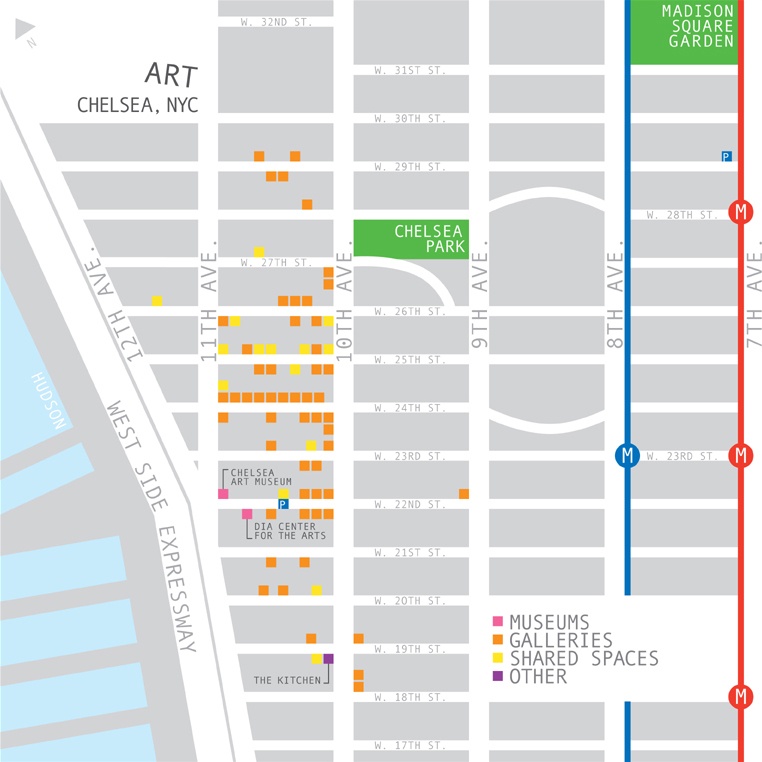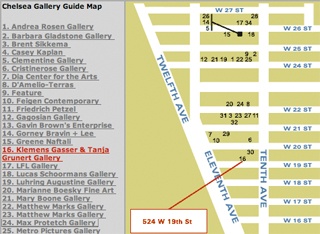DAY 15 Today is Tuesday, June 21,st and we consider the creation of the "art district," and its role in the art market. The readings
focus on the move of New York's contemporary art district from SoHo to Chelsea at the end of the twentieth century. In your response,
discuss either SoHo or Chelsea and the factors that went into making or dismantling each neighborhood as an art district. Many art
world players thought that SoHo, as a contemporary art magnet, would last forever. Today, the feeling about Chelsea is the same,
specially with speculators like the Whitney Museum of American Art, which plans to move from the Upper East Side to Chelsea in a new
uilding by 2015. But many remember the Guggenheim's ill-fated expansion to SoHo. By the time that satellite exhibition space closed,
SoHo galleries had begun their exodus north and westward to Chelsea. You might also site other examples of art districts in other cities
or countries.
Readings
New York City: Soho, Lower East Side
A Gallerist Turned Developer - New York Times.pdf
Read: Fred A. Bernstein, "A Gallerist Turned Developer," the New York Times, March 18, 2007.
New York City: Chelsea and Contemporary Art
Read: David Halle and Elizabeth Tiso, "Contemporary Art: A 'Global and Local Perspective via New York's Chelsea District," in UCLA, On-Line Working Paper Series, California Center for Population Research, 2007
No Next Chelsea
Read: Saltz, Jerry. "No Next Chelsea," in Modern Painters, October 2006.
Art, Bohemia and Economic Development
Read: Elizabeth Currid, "Bohemia as Subculture; "Bohemia" as Industry: Art, Culture and Economic Development," in Journal of Planning Literature, 23, 368-383.{color}
The Highline!
Read: Lisa Chamberlain, "Open Space Overhead," in Planning, March 2006.
Geography of Galleries in NYC
Recommended Reading: Harvey Molotch and Mark Treskon, "Changing Art: Soho, Chelsea and the Dynamic Geography of Galleries in New York City," inInternational Journal of Urban and Regional Research, Vol. 33.2, June 2009, pp 517-531.
Individual Contributions
Vincent Anthony Falkiewicz
Erica Gilbert-Levin
The art gallery district in Chelsea on Manhattan's Far West Side has replaced SoHo as the most prominent and "most important" site in the world "for sales of new works of Contemporary Art," according to Halle and Tiso. This development is the result of a confluence of factors, all of which shed light on dynamics integral to today's art market.
One factor involved in the rise of the Chelsea district is directly related to economic developments: "Chelsea's very rise was real estate-driven." Soaring rents in SoHo between 1995 and 1999 "[forced] a mass exodus to Chelsea of galleries that could not afford the new rents" (Halle and Tiso). In fact, Saltz maintains that real estate and real estate alone was behind Chelsea's rise. But while market forces may have undergirded the initial migration, the factors that contributed to the success of these galleries in Chelsea appear to be more complicated. The principal features of the content of the contemporary works available in the Chelsea galleries "[speak] to central themes in the audience's lives," including "the modern family, the landscape and environmental threats to it." The prominence of these themes suggests that the creation of contemporary art is not necessarily driven, at least not in total, by "markets and economics," argue Halle and Tiso. In fact, aesthetic factors are "shaped by, and respond to, a different set of dynamics than the market domain." Perhaps this explains the success of boutique-style, independent galleries in Chelsea which open their doors to the public without charging an entrance fee. Chelsea galleries appear to have been able to draw on principles of public accessibility and still make a profit. This might be due, suggest Halle and Tiso, to the "buzz" created when more people are exposed to the art; perhaps greater accessibility generates more discussion, more critical reviews, a higher profile for the art and its artists, and, in turn, more interest from the elite collectors who actually pay for the art. In fact, if we return to Bourdieu![]() 's model of symbolic capital
's model of symbolic capital![]() , we might surmise that Chelsea's galleries have been so successful because they are able to generate a sense of disconnection from the perception of economic interest, which has the effect of imbuing the works contained within with a sense of prestige, the notion of "art for art's sake" – and by building this reputation, the galleries are able to draw in more collectors who seek art imbued with such prestige. We can know for certain that artists are more attracted to independent galleries than to corporate institutions that allow them less "freedom," note Halle and Tiso.
, we might surmise that Chelsea's galleries have been so successful because they are able to generate a sense of disconnection from the perception of economic interest, which has the effect of imbuing the works contained within with a sense of prestige, the notion of "art for art's sake" – and by building this reputation, the galleries are able to draw in more collectors who seek art imbued with such prestige. We can know for certain that artists are more attracted to independent galleries than to corporate institutions that allow them less "freedom," note Halle and Tiso.
Agora Gallery in Chelsea
Kimberly Ann Phoenix
Consider & comment:
What did you think of today's readings and wiki features? What issues if any did they raise for you? How did the audio visual material provided support your understanding of this topic? Comment on your classmates' posts. Leave your comments in the box below.


